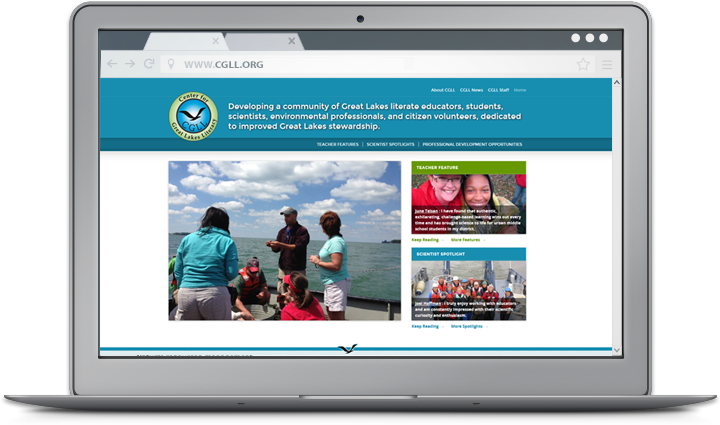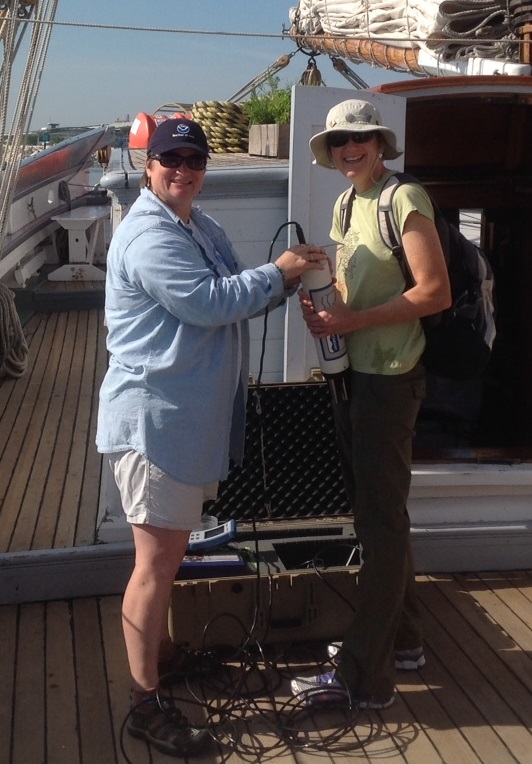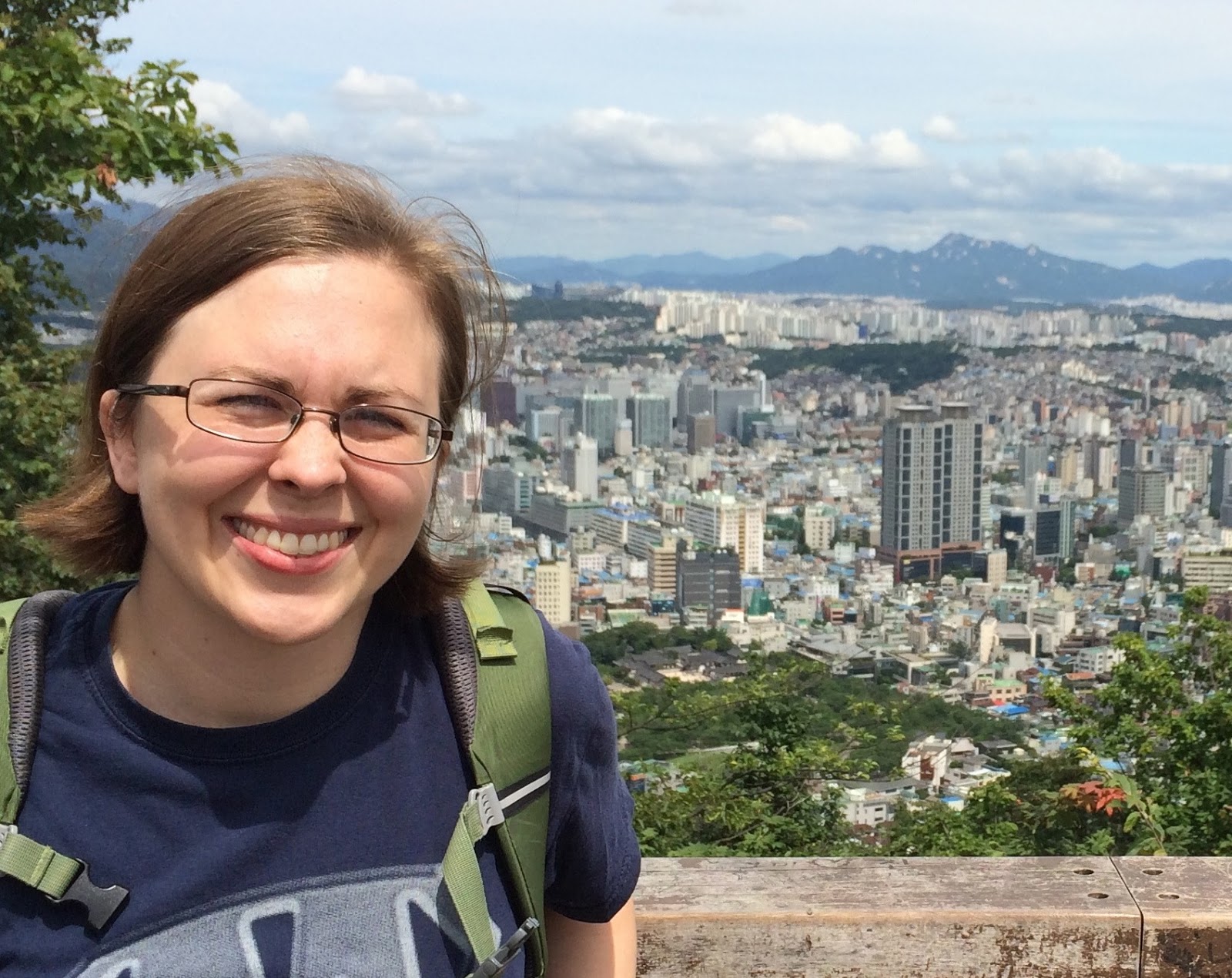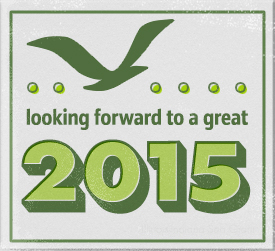January 28th, 2015 by iisg_superadmin
A closer look at web tools and sites that boost research and empower Great Lakes communities to secure a healthy environment and economy.
For over two years, the Limno Loan program has been shaking up science class across the Great Lakes region. Coordinated by IISG and the U.S. EPA Great Lakes National Program Office, the program gives students an opportunity to collect water quality data from local waterways with the same kind of monitoring sensors used by scientist aboard the R/V Lake Guardian.

And now, teachers can take their Hydrolab projects one step further with help from IISG’s new Limno Loan site. In addition to information about the equipment and the parameters it measures, the site provides lessons and activities to help teachers K-12 better integrate the Hydrolab into their aquatic science sections.
The activities, most of which were created by educators who used the equipment in their own classrooms, focus on demonstrating the connections between water quality, aquatic food webs, and human activities. Sample water quality data sheets are also available. The website also provides a unique opportunity for classes to share their data and compare it to information collected by fellow students across the region.
New activities will be added as they are developed, so be sure to check back later. You can also read more about how the Limno Loan program has helped improve student understanding of Great Lakes sciences in our Winter 2012 Helm.
January 27th, 2015 by iisg_superadmin
Managing aquatic invasive species is no easy—or cheap—task. Plants and animals spread to new regions through a variety of routes, many of which involve human activities like fishing, boating, and gardening. Coupled with the fact that there are hundreds of new species poised to thrive in Midwestern environments, it is very difficult for natural resource managers to get a jump on these invaders.
But all that may be changing in Illinois due to a new database cataloging the presence of non-native species across the state. Created at Loyola University Chicago by then-graduate student Abigail Jacobs and ecologist Reuben Keller, the database brings together animal and plant sightings collected by the U.S. Geological Survey, Field Museum, Illinois Natural History Survey, and many other organizations and researchers. Its more than 20,000 records makes it one of the most comprehensive AIS databases in country.
The size and detail of the database reveals previously-unknown patterns in the movement of invasive species that will help natural resource managers better focus their control and monitoring efforts.
“We now have maps showing the number of AIS in each county and showing where species tend to be first recorded,” said Keller. “These are really useful for determining where managers should focus on controlling existing invaders and where efforts should go into monitoring for new invaders.”
These maps and other analysis results are expected to be included in the updated Illinois State Comprehensive Management Plan for Aquatic Nuisance Species. First written in 1999, in part by IISG’s Pat Charlebois, the plan identifies invasive species that pose the greatest threat to the state and provides guidance for organizations working to halt their spread.
“The database will make it easier to connect with audiences by talking about how the specific waterways and habitats they care about are being affected by invasive species,” said Pat.
***Photo: Purple loosestrife is one of many invasive plants cataloged in the database.
January 21st, 2015 by iisg_superadmin
A closer look at web tools and sites that boost research and empower Great Lakes communities to secure a healthy environment and economy.
.png) Aquaculture plays an increasingly vital role in securing long-term food supplies, and the Midwest is poised to help. In fact, a rich supply of raw materials and proximity to large markets makes Illinois and Indiana prime locations for aquaculture farms and related industries.
Aquaculture plays an increasingly vital role in securing long-term food supplies, and the Midwest is poised to help. In fact, a rich supply of raw materials and proximity to large markets makes Illinois and Indiana prime locations for aquaculture farms and related industries.
To help producers cash in on these benefits, IISG, University of Illinois Extension, and Purdue Extension teamed up to create Aquaculture Economics and Marketing Resources. The site provides leading research and how-to information for developing a productive, innovative, and profitable aquaculture business.
Visitors interested in starting a new business will find resources on everything from establishing an organizational structure to creating a business plan to securing financing. New and veteran producers can also find tips for connecting with consumers and tapping into niche markets.
Aquaculture Economics and Marketing Resources is one of several tools IISG uses to help aquaculture producers define markets and create value-added opportunities for their products. Since 2005, Kwamena Quagrainie has held roughly 40 workshops with over 1,200 participants. These and other efforts in Indiana resulted in about $15 million in farm sales of aquaculture products in 2013, a nearly five-fold increase over 2005.
To learn more about how aquaculture is strengthening Indiana’s economy, read our 2013 program impacts.
January 15th, 2015 by iisg_superadmin
As the 2014 Knauss season wraps up, IISG-sponsored graduate student Katherine Touzinsky wrote in to update us on her work at the U.S. Army Corps of Engineers since we last heard from her in August.
The last time I wrote for the IISG blog, I was overwhelmed with gratitude for how far the Knauss Fellowship had taken me—both figuratively through professional and personal development and literally by zig-zagging across the country. Since then, the travel and learning has not slowed down. I have eaten lunch on a dredging rig in the Gulf of Mexico, visited a research laboratory in Athens, Greece, attended a conference on deltas and climate change in the Netherlands, and explored the Everglades learning about the impending consequences of invasive species and climate change.
 The fellowship is now coming to a close, and the tides are changing at work. The open-ended learning ended a few months ago when I committed the majority of my time to a new and exciting project with the U.S. Army Corps of Engineers.
The fellowship is now coming to a close, and the tides are changing at work. The open-ended learning ended a few months ago when I committed the majority of my time to a new and exciting project with the U.S. Army Corps of Engineers.
Ever since the devastation of 2011, when over 14 weather and climate-related events—Hurricane Sandy being the most noteworthy—resulted in an unprecedented loss of lives and property, many federal agencies have begun their own investigation of climate change and disaster preparedness under the broad headline of “resilience.”
Resilience is an ambiguous word that can mean different things depending on the case and application, but most definitions include four key aspects: prepare, resist, recover, and adapt. Because the Corps is in charge of the nation’s water resources infrastructure, there is a huge need to investigate these concepts and research the best way to apply resilience to Corps policy and practice. I have been offered the opportunity to assist with much of this initial research. While it is intimidating to face such a huge issue and figure out how to recommend solutions for such a huge and venerable organization like the Corps, I wake up every day excited to learn more.
This coming February, we are working on a joint U.S. Army Corps and NOAA workshop to quantify resilience in Mobile Bay, AL. I will help test the method by working with community experts from the Mississippi-Alabama Sea Grant Consortium and the local port authorities to be vetted later this spring by the National Academy of Sciences Transportation Research Board.
Despite all of this excitement, I know that my Master’s thesis is still waiting for me. Luckily, I have been given the opportunity to continue working in Washington D.C. at the Corps headquarter office and will work part-time on my thesis. I’m brainstorming possible locations to work on the thesis—it would be great to say that I wrote a chapter or two in the Library of Congress!
The Knauss Fellowship has been an unbelievable opportunity that continues to unfold!
January 14th, 2015 by iisg_superadmin
A closer look at web tools and sites that boost research and empower Great Lakes communities to secure a healthy environment and economy.
.png) Educators interested in strengthening aquatic science programs and encouraging Great Lakes stewardship—look no further than the new Center for Great Lakes Literacy (CGLL) website.
Educators interested in strengthening aquatic science programs and encouraging Great Lakes stewardship—look no further than the new Center for Great Lakes Literacy (CGLL) website.
Created by Sea Grant educators throughout the region, the site is a one-stop-shop for classroom activities designed to boost Great Lakes literacy. Educators will find information on and links to teacher-tested curriculum like Fresh and Salt and Estuaries 101. And the Teacher Feature allows visitors to hear about education success stories directly from colleagues across the region.
Visitors to the site can also learn about the latest professional development opportunities available throughout the region. For example, teachers interested in the annual Shipboard Science Workshop, held this year on Lake Michigan, can find workshop information and application deadlines. Featured blogs also make it possible to read about teacher experiences at past CGLL workshops and follow along with the latest projects.
For more information on upcoming educator workshops and available curriculum, contact Terri Hallesy.
January 13th, 2015 by iisg_superadmin
Real-world, hands-on activities are bringing Great Lakes science alive for a group of Wisconsin middle school students. Our friends at Wisconsin Sea Grant have the story.
Two Wisconsin teachers have made exceptional use of the educational resources that Sea Grant has to offer. And not just resources from Wisconsin Sea Grant—the teachers have found valuable support from the Center for Great Lakes Literacy, a collaborative effort by educators in the Great Lakes Sea Grant Network funded through the Great Lakes Restoration Initiative.
The teachers are Lynn Kurth and Cindy Byers. Kurth works as a science teacher for Prairie River Middle School in Merrill, Wis. Just a 50-minute drive away, Byers works as a science and reading teacher for Rosholt Middle School in Rosholt, Wis.
They met in 2011 during a week-long voyage on the Lake Guardian, a research vessel owned by the U.S. Environmental Protection Agency (EPA). They were participating in a Shipboard and Shoreline Science Workshop, a program conducted by the Great Lakes Sea Grant programs through the former Centers for Ocean Sciences Education Excellence (which has become the Center for Great Lakes Literacy). They were part of a team of five colleagues who worked on a research project together. Kurth and Byers bonded over a Hydrolab—a large, tubular piece of water testing equipment—and it’s led to bigger and better things for both them, their students, and other teachers across the country.
The Hydrolab takes various water quality readings. Kurth and Byers were drawn to it because both of their schools are near rivers and the EPA was providing the device on loan for use with their classrooms after the cruise. They saw the opportunity to partner in the future.
It worked. “We supported each other’s teaching and enriched each other’s classrooms by having this collaboration,” Byers said. “We had the kids Skype with each other a couple of times and present the Hydrolab data they collected. Even though our schools are not that far apart, it seemed quite exotic to the kids and they were excited to use a piece of equipment that scientists use. A lot of the reasons we’ve been able to do so much with the program is that we’ve been supporting each other all along.”nce-in-a-lifetime learning experiences for students. In fact, 26 classes across the Great Lakes region took a break from their regular activities over the last year to video chat with the scientists behind the EPA Lake Guardian‘s annual monitoring cruises. Some students even took a guided virtual tour of the boat.
And now a new group of teachers and non-formal educators have an opportunity to work with Sea Grant specialists to introduce activities like these into their aquatic sciences sections during the 2015 Shipboard Science Workshop on Lake Michigan. Applications for the 15 available spaces are due February 10.
January 8th, 2015 by iisg_superadmin
As the 2014 Knauss season wraps up, IISG-sponsored graduate student Sara Paver wrote in to update us on her work at National Science Foundation Division of Ocean Sciences since we last heard from her in July.
The last few months have been a whirlwind of activity. In my placement as a Knauss Fellow in the Division of Ocean Sciences at the National Science Foundation, I have continued working with the Coastal Science, Engineering, and Education for Sustainability (Coastal SEES) working group and the Biological Oceanography Program. I am currently leading the efforts of the working group to organize and plan the Coastal SEES Principal Investigators’ Meeting, which will be held January 29-30, 2015. I am looking forward to meeting the 2013 and 2014 Coastal SEES awardees and hearing about the exciting work they are doing to make progress on coastal sustainability issues.
As part of my work with the Biological Oceanography Program, I have been helping manage the review of five grant proposals. I am currently writing analyses that summarize the reviewers’ feedback and explain whether or not the proposal is being recommended for an award.
In addition to the work I’ve been doing at NSF headquarters in Arlington, VA, I have had the opportunity to participate in valuable professional development opportunities. I presented my dissertation research at the International Society for Microbial Ecology meeting in Seoul, South Korea. I also participated in the Explorations in Data Analyses for Metagenomic Advances in Microbial Ecology Workshop at Kellogg Biological Station in Hickory Corners, MI. Ashley Shade, Tracy Teal, and Josh Herr put together an excellent week of learning modules, lectures, and guest speakers. My favorite highlight—out of many—was the question and answer session we had with Jim Tiedje.
Most recently, I traveled to Hawaii to participate in the Ecological Dissertations in the Aquatic Sciences (Eco-DAS) Workshop at the Center for Microbial Oceanography: Research and Education. It was a wonderful opportunity to meet peers who, like me, have recently finished a Ph.D. or will be finishing very soon. As a result of participating in Eco-DAS, I am working on two collaborative manuscripts. It was a great week to get excited about science and collaboration.
The best part of my fellowship has been all of the connections that I have made with people, including my colleagues at NSF, the other fellows, people in the Illinois-Indiana Sea Grant Office, individuals that I interacted with during Knauss placement weeks and Knauss professional development activities, researchers serving on NSF panels and giving presentations at NSF, and people I interacted with at the workshops and conferences I attended. The opportunity to be a Knauss Fellow has broadened my perspective on many things, including available career paths. I might consider coming back to NSF as a rotating program officer in the future. In the near term, I plan to return to an academic setting in a postdoctoral research position.
December 19th, 2014 by iisg_superadmin
 2014 has been an exciting year for IISG. New partnerships were forged, major projects were launched, and existing programs continued to grow. As we head towards another new year, let’s take a look back at some of the highlights of the last 12 months.
2014 has been an exciting year for IISG. New partnerships were forged, major projects were launched, and existing programs continued to grow. As we head towards another new year, let’s take a look back at some of the highlights of the last 12 months.
–More than $300,000 was awarded to three research projects that will improve understanding of the Lake Michigan nearshore food web, uncover connections between sediment removal projects and a community’s ability to weather environmental hazards, and identify why people adopt stormwater management practices.
–The Great Lakes Social Science Network gave researchers, natural resource managers, weather forecasters, and educators the information they need to ensure safety and planning messages meet the needs of local communities.
–A mobile app offering a self-guided walking tour of Chicago’s historic and scenic downtown shoreline was released for Android and iOS.
–We said goodbye to several staff members and friends and welcomed 10 more to the team.
–The Illinois Clean Marina Program celebrated one year and six certifications.
–We got some help spreading the word about AIS prevention from celebrity newcomers Lady Quagga and Jumpin’ Jack.
–The Michigan City buoy returned to the nearshore waters of Lake Michigan with a new sensor chain that measures temperatures at different depths.
–Illinois Governor Pat Quinn announced a $1.1 million investment in Blue Island to expand and improve stormwater management efforts that began in partnership with IISG.
–Great Lakes Monitoring made it possible for researchers to analyze decades of high-quality monitoring data from across the region in minutes.
–Illinois EPA and the state Department of Agriculture released a plan to reduce the nutrient pollution behind the Gulf ‘Dead Zone.’
A big thanks to all of the partners and collaborates that made these and other 2014 successes possible!
December 18th, 2014 by iisg_superadmin
Earlier this week, we celebrated the 40thanniversary of the Safe Drinking Water Act (SDWA). This law allows us to feel safe taking a sip from a water fountain or filling a glass from the tap virtually anywhere in the United States. It’s undeniably a feat worth celebrating, but it’s not to say that delivering safe drinking water to millions of Americans is without its challenges—as this year’s events in Charleston, West Virginia and Toledo, Ohio prove.
One of the largest challenges lies in the system itself. Much of our drinking water infrastructure is more than a century old and in desperate need of repair. Leaky pipes and broken water mains cost the country around 6 billion gallons of water every day—roughly 16 percent of our daily use. In the Great Lakes region alone, the annual water loss is enough to supply 1.9 million Americans with safe drinking water for a year.
In northeastern Illinois, the cost of leaky pipes is heightened by overtaxed aquifers and legal limits on how much water can be pulled from Lake Michigan. And as the region’s population grows, there is increasing concern that demand for clean water will outpace supply if communities don’t take steps to encourage conservation, including adjusting water prices to reflect the real costs.
Treating water to meet national standards poses its own problems. In fact, some of the chemicals used to treat contaminants regulated under SDWA have themselves proven toxic under the right conditions.
Water suppliers today also face the question of how to deal with emerging contaminants like pharmaceuticals and chemicals found in personal care products. Our wastewater and drinking water systems weren’t designed with these in mind and often don’t eliminate them. These chemicals have been found across the country in the rivers and lakes we rely on for fresh water, including Lake Michigan. In fact, a 2008 Associated Press investigation found pharmaceuticals and their byproducts in the drinking water supplies of at least 41 million Americans. They’re present in very small concentrations—too small to be toxic to humans. But the long-term risk to humans is still largely unknown. What is clear is that at least some pose a significant threat to aquatic wildlife.
One of the biggest culprits in lake and river pollution is stormwater runoff
. When it flows into waterways, runoff brings everything with it—from gasoline and trash on city streets to fertilizers and pesticides from lawns and farms. These pollutants and the algae growth they spur on can make it more expensive to treat drinking water. In rare cases, water quality can drop so low that it doesn’t meet federal standards even with treatment. And concerns about pollutant-laden stormwater runoff
continue to grow in the Midwest as storms get bigger.
Fortunately, while public water systems and communities continue to grapple with these and other challenges at a larger scale, there is a lot individuals can do day-to-day. For example, properly disposing of unwanted medicine can help keep pharmaceutical chemicals out of waterways and drinking supplies. Homeowners and gardeners can also adopt natural lawn care practices that reduce water usage and prevent landscape chemicals from washing into nearby rivers and lakes. Even simple practices like washing your car with a bucket and sponge or waiting for a full load to start the washing machine can go a long way towards conserving water.
Visit EPA’s Conserving Water site for more information and tips.



.png)

.png)
.jpg)



.jpg)
